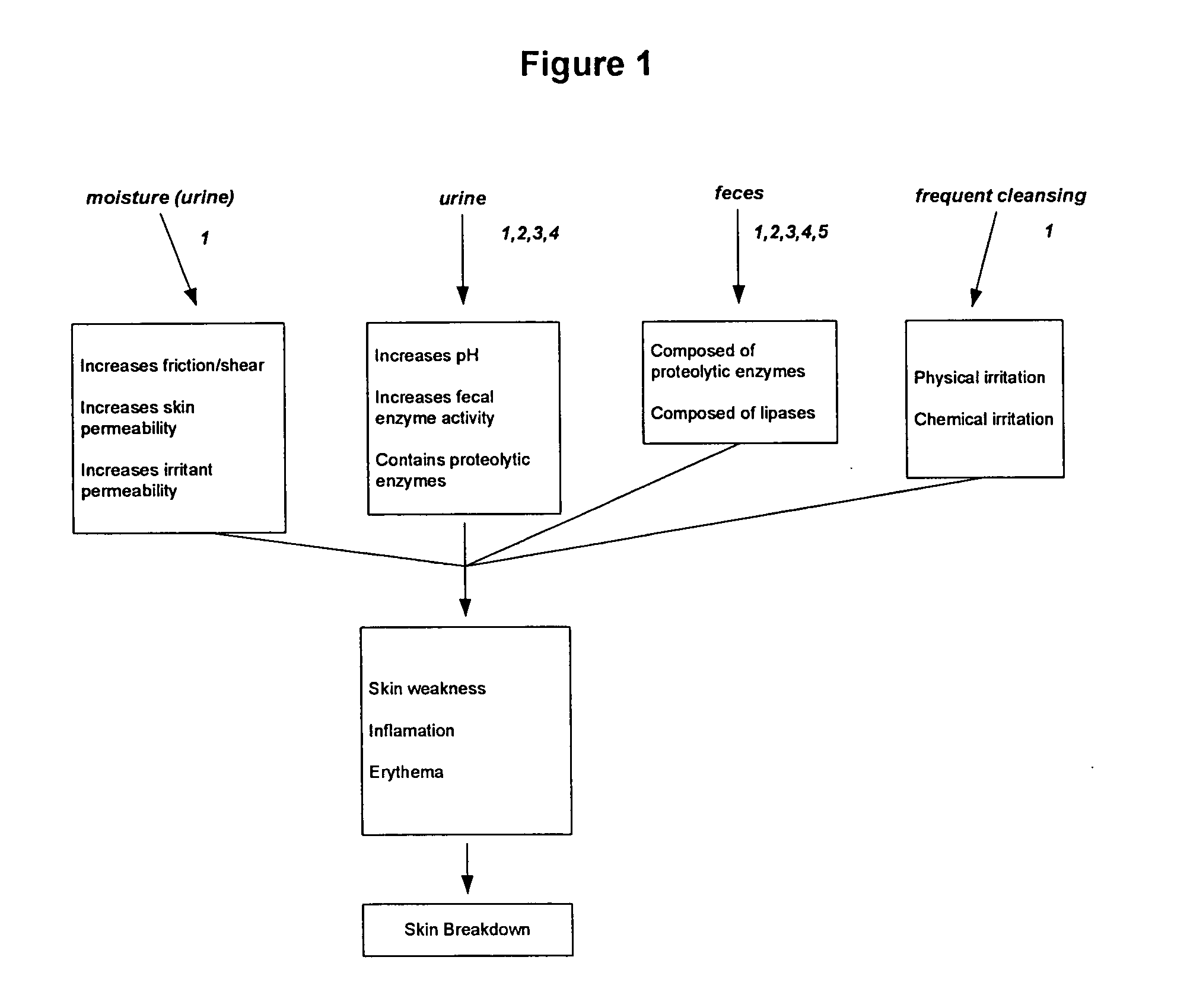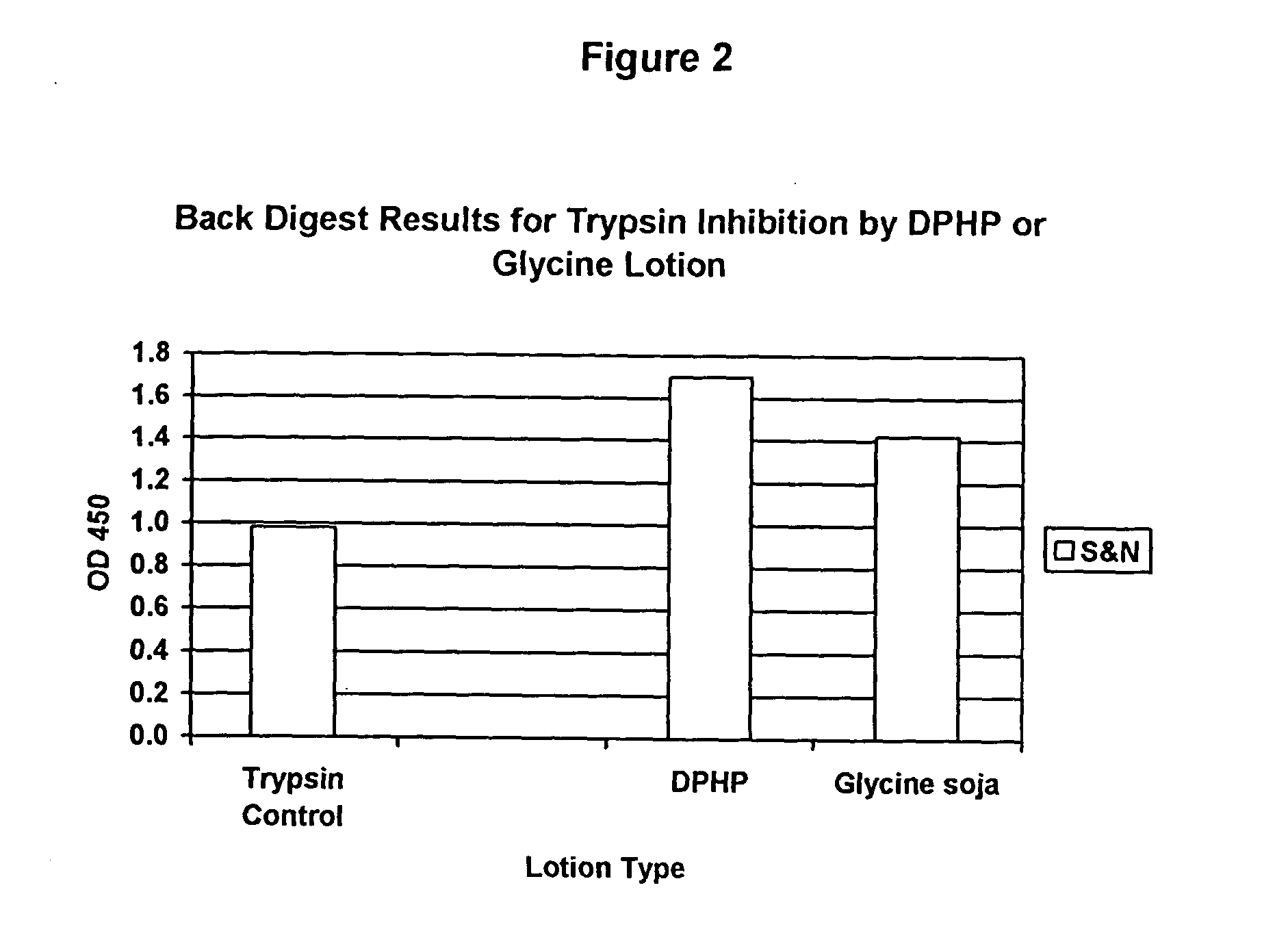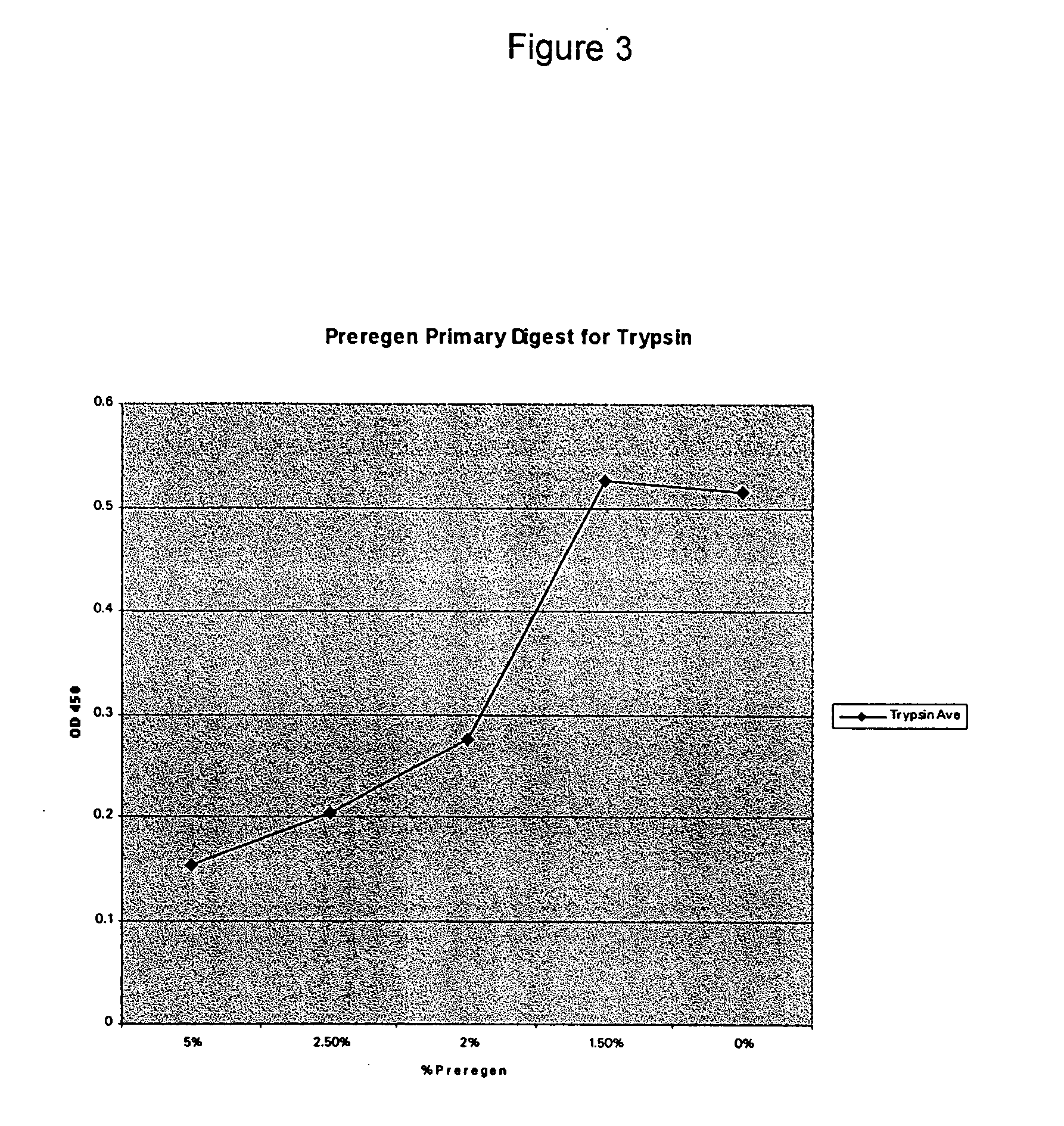Protease inhibitor compositions for prevention and treatment of skin conditions
a technology of protease inhibitors and compositions, applied in the direction of biocide, peptide/protein ingredients, bandages, etc., can solve the problems of irritability and inflammation, contribute to skin breakdown, and/or exacerbate various skin conditions, and achieve a superior barrier to these enzymes, preventing them from damaging the skin
- Summary
- Abstract
- Description
- Claims
- Application Information
AI Technical Summary
Benefits of technology
Problems solved by technology
Method used
Image
Examples
example 1
[0079] An experiment was conducted to examine the inhibitory effect of a formulations prepared according to this invention (with coconut oil) on lipase inhibition. Whole milk (containing emulsified fat) was mixed with bile salts to more fully disperse the fat. This mixture was then placed in a test tube with a lipase solution or a lipase solution+prototype formulation and pH was monitored over time. As fatty acids were liberated from the milk via lipase digestion, the pH of the milk solution decreased. The initial reaction rate or pH decrease was calculated over time.
[0080] Table 1 indicates that the initial reaction rate is highest without the formulations of this invention added, which means that the anti-lipase activity of formulations according to this invention provide added protection from skin breakdown due to the presence of incontinence related enzymes. In other words, when the Glycine soja protein (in this case, Preregen) or DPHP formulations are added, the initial reacti...
example 2
[0081] The inventor selected glycine soja and DPHP by testing numerous potential inhibitors in vitro to assess their activity against protease enzymes. A protease enzyme present in feces or urine, such as trypsin, chymotrypsin, or elastase, was placed in contact with a substrate (crosslinked albumin, sulfaniloazo-albumin and gelatin). Separately, the protease (trypsin, chymotrypsin or elastase) was incubated with a protease inhibitor and then this combination was placed in contact with the substrate. The substrate-protease or substrate-protease-protease inhibitor combination was then left to incubate.
[0082] At a defined time, the incubation was stopped by the addition of NaOH. Color was developed and read at OD 450. The intensity of the color developed was directly proportional to the amount of substrate digested by the protease. This allowed the inventor to analyze which protease inhibitors prevented the most substrate digestion.
example 3
[0083]FIG. 2 shows the effectiveness of both a DPHP prototype and a glycine soja prototype for inhibiting the protease, trypsin. A back digest was performed with a spectrally active protease substrate, trypsin, and either DPHP or glycine soja. Trypsin was incubated with either DPHP or glycine soja, and for the control, neither DPHP nor glycine soja was used. The trypsin or trypsin+either DPHP or glycine soja was then placed in contact with a substrate, the results of which are shown in FIGS. 3 and 4.
[0084] The substrate used was a crosslinked albumin, sulfaniloazo-albumin and gelatin at a slightly acidic pH. The substrate is susceptible to proteolysis by a wide range of enzymes including collagenase, papain, trypsin, chymotrypsin and bromelain. Digestion of this substrate by protease releases a dye. Color is developed at the end of the reaction period via the addition of 0.1 N NaOH. This color development can be measured spectrophotometrically at OD 450 and the OD value is proporti...
PUM
| Property | Measurement | Unit |
|---|---|---|
| molecular weight | aaaaa | aaaaa |
| pH | aaaaa | aaaaa |
| area | aaaaa | aaaaa |
Abstract
Description
Claims
Application Information
 Login to View More
Login to View More - R&D
- Intellectual Property
- Life Sciences
- Materials
- Tech Scout
- Unparalleled Data Quality
- Higher Quality Content
- 60% Fewer Hallucinations
Browse by: Latest US Patents, China's latest patents, Technical Efficacy Thesaurus, Application Domain, Technology Topic, Popular Technical Reports.
© 2025 PatSnap. All rights reserved.Legal|Privacy policy|Modern Slavery Act Transparency Statement|Sitemap|About US| Contact US: help@patsnap.com



